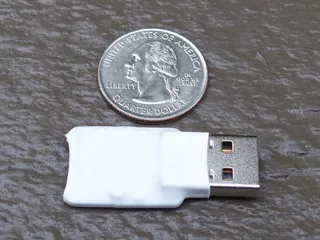TmpUsb
TmpUsb is presented to a computer as an USB disk drive 11 KB in size (7-8 KB usable). This drive can be then used to store any data (providing that size is not the issue) but primary idea is to use it for the encryption keys. Once all data has been copied to it, user would perform “arming” thus enabling self-erase after approximately 3 seconds of being unplugged.
Basic use case for such behavior would be a BitLocker key storage. Having encrypted server brings a lot of security benefits but with a cost of re-entering keys on every restart. BitLocker can work around that by allowing you to store keys on USB in order to decrypt content automatically. Unfortunately this means that, if your server is stolen, you also give your encryption key with it thus nullifying encryption.
By using TmpUsb your encryption keys will be deleted rendering data on stolen server completely unusable. While this won’t bring your server back, at least data won’t be readable any more.
